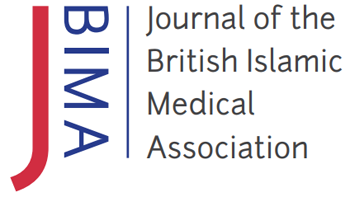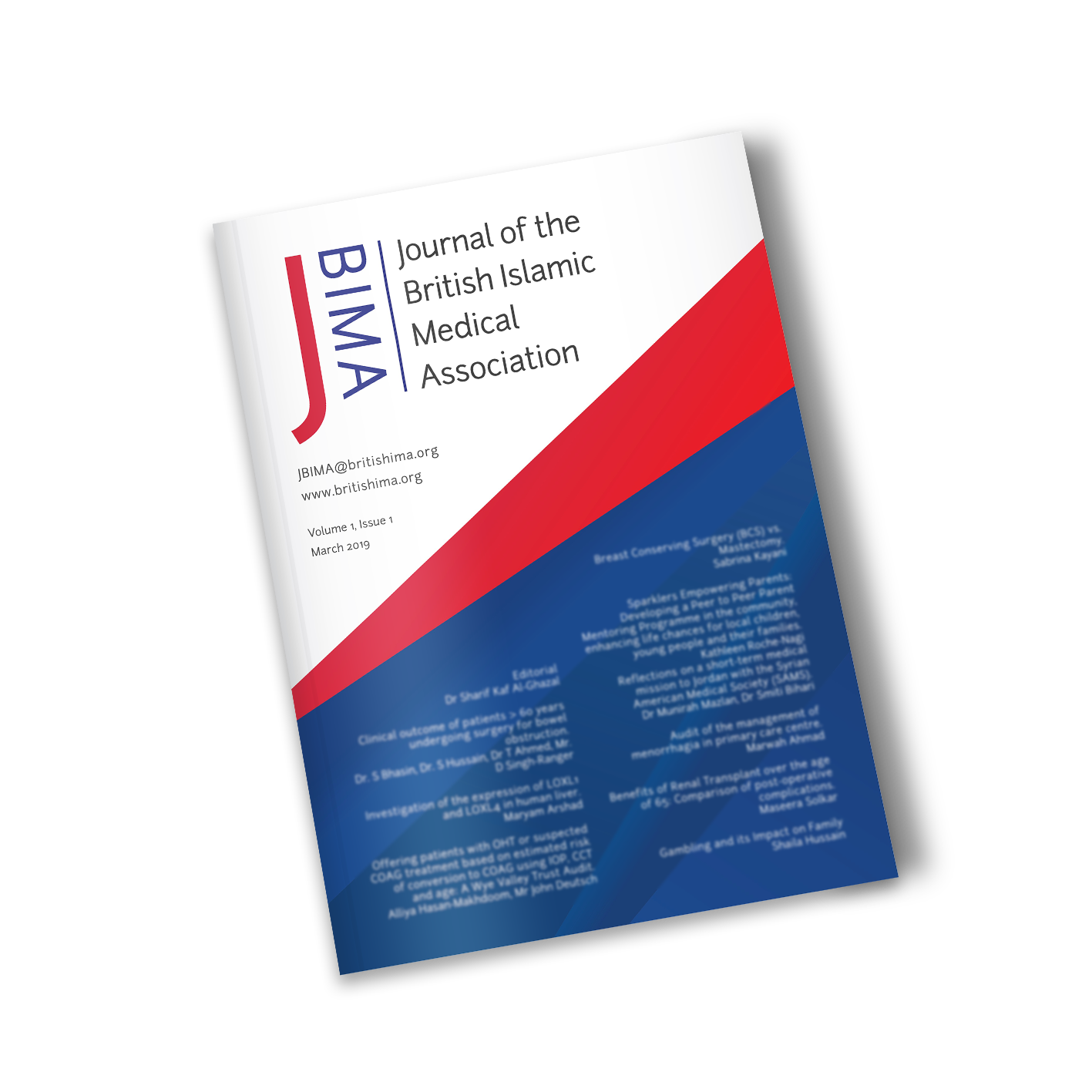
Introduction
The Ottoman State witnessed significant advancements
in the fields of science and art during the 15th century
with notable progress also occurring in the field of
medicine. Among the prominent medical scholars of this
period was Şerefeddin Sabuncuoğlu, who distinguished
himself through innovative surgical practices and
substantial contributions to the Turkish medical
literature. Sabuncuoğlu left an indelible mark on Islamic
medical history, with his influence extending beyond the
Islamic world into Western medicine.
The life of Serefeddin Sabuncuoglu
Şerefeddin Sabuncuoğlu was born in 1386 in Amasya, an
import antintellectual center of the Ottoman Empire
He hailed from a prominent medical family; his
grandfather, Sabuncuoğlu Mevlânâ el-Hâc İlyas Çelebi
Bey, was the chief physician of Çelebi Sultan Mehmed. It
is believed that Sabuncuoğlu received his medical
education at the Amasya Darüşşifa under the tutelage of
Burhâneddin Ahmed en-Nahcuvânî (2). After practicing
medicine there for fourteen years, he spent some time in
Kastamonu, where he began writing his seminal works.
Notably, after completing Cerrâhiyye-i Ilhanniye, he
traveled to Istanbul to present the work to Sultan
Mehmed the Conqueror. In his final work,
Mücerrebnâme, written in 1468, Sabuncuoğlu
mentionedthat he was 85 years old at the time, and he is
presumed to have passed away shortly thereafter.
Despite his contributions, Sabuncuoğlu’s name was not
widely recognized within the Ottoman scientific
community. His name first appeared in the historical
record in the 1505 work Alâim-i Cerrâhîn by the surgeon İbrahim b. Abdullah. Additionally
student Gıyâs b. Muhammed İsfahânî praised his
mentor’smedical achievements in his book
ṣıḥḥa, which he dedicated to Sultan Bayezid II
The Works of Serefeddin Sabuncuoglu
Şerefeddin Sabuncuoğlu’s most renowned work is
Cerrâhiyye-i İlhâniyye, which holds the distinction of
being the first surgical text written in Turkish during the
Ottoman period. This work not only reflects the level of
Turkish surgery in the 15th century but also represents an
adaptation of the surgical section of the Andalusian
Islamic physician Abu al-Qasim al
Taṣrīf, with the addition of two new chapters, as well a
illustrations of surgical instruments and patient
treatments. Cerrâhiyye-i İlhâniyye
history for being the first text to depict surgical
interventions using miniature illustrations
composition in straightforward and accessible Turkish
further underscores its significant contribution to Turkish
medical literature, and its reflection of the linguistic
features of Anatolian Turkish makes it an essential
resource for the study of Turkish grammar and phonetics
(6).
Three known copies of the manuscript have survived to
the present day. Two of these copies, housed at
theBibliothèque Nationale in Paris and the Millet Library
in Istanbul, were penned by Sabuncuoğlu himself.
Amongthese, the Paris manuscript, which was presented
to Sultan Mehmed the Conqueror and bears the seal of
Sultan Bayezid II, is regarded as the most valuable. This
manuscript consists of 205 folios, each containing
seventeen lines of meticulously penned Turkish text, with
red ink used to highlight key titles. The text offers detailed descriptions of various treatments involving
cauterization, surgical procedures, and the management
of fractures and dislocations, all accompanied by a total
of 138 miniature illustrations and depictions of surgical
instruments. Notably, some of the points described for
cauterization treatments have been found to coincide with
acupuncture points (7).
Another significant work by Sabuncuoğlu is
Mücerrebnâme, which details the preparation and usage
of various medicines tested on animals, humans, and
even the author himself (8). Mücerrebnâme is notable as
the first monograph in Turkish medical history to
describe a physician’s own medicinal discoveries and
treatment methods. The text is organized in a manner
similar to modern case reports, with medicines
categorized from most to least used.
Sabuncuoğlu also translated the “Akrâbâzîn” section of
the Ẕaḫîre-i Ḫârizmşâhî, a Persian work by Is
Hasan al-Jurjani, into Turkish at the request of Prince
Bayezid in 1444. This work, known as
Tercümesi, provided detailed instructions on the
preparation and application of various medications,
significantly contributing to the development of Turkish
medical terminology (2, 9).
Contributions and Innovations in Medicine
Şerefeddin Sabuncuoğlu made significant contributions
to the field of surgery, leaving a lasting impact on the
medical world. The innovations he introduced in
Cerrâhiyye-i İlhâniyye, particularly in orthopedics,
neurosurgery, urology, gynecology, and paedetrics
surgery, underscore his importance in medical history.
For example, the techniques he developed for spinal
surgery, neurological disorders, pain management, and
anesthesia were widely adopted in subsequent periods
(10, 11).
Sabuncuoğlu also introduced groundbreaking designs for
surgical instruments, meticulously illustrating their use in
his Works (12). These original contributions had a
profound influence not only on Ottoman medicine but
also on Western surgical practices. His detailed
illustrations, created despite the technical limitations of
his time, ensured that his works attained a universal
quality (13).
Beyond surgery, Sabuncuoğlu made notable
advancements in dermatology, ophthalmology, dentistry,
orthopedics, andneurology. His work in these areas
demonstrates his comprehensive medical knowledge and his ability to apply this knowledge effectively in practice.
Particularly, his contributions to pain management and
anesthesia laid the foundation for modern anesthetic
practices (14).
In the field of obstetrics and gynecology, Sabuncuoğlu
introduced innovative surgical techniques and designed
specialized instruments, which he meticulously
documented in his works (15). These advancements
highlight his progressive understanding of medical
science for his time.
Moreover, the detailed illustrations in Sabuncuoğlu’s
works played a vital role in medical education of the
time, enabling surgical techniques to be disseminated
more widely. His contributions represent a pivotal
moment in Islamic medical history, establishing a
foundation for the development of modern medicine.
Conclusion
Şerefeddin Sabuncuoğlu was a pioneering figure in
thedevelopment of Ottoman medicine, introducing
numerous innovations that have had a lasting impact on
the field. His works are not only valuable for their
medical content but also for their cultural and scientific
significance. Understanding Sabuncuoğlu’s life and
contributions is crucial for appreciating the role of
Muslim scholars in the foundations of modern medicine.
Therefore, recognizing and preserving his legacy is of
great importance for both medical and cultural history.
References
- Varol GB. XIX. ve XX. yüzyıla intikal eden
Amasya medreseleri [MSc]. Amasya: Amasya
Üniversitesi; 2019.
2. Yıldırım N. SABUNCUOĞLU ŞEREFEDDİN.
TDV İslam Ansiklopedisi. İstanbul2008. p. 358
3. Gürlek M. Anadoluda Yazılmış İlk Türkçe Cerrahî
Yazmalara Bir Örnek: Alâ’im
Turkish Studies. 2011;6(3).
4. Yüksek E. Amasyalı Şerefeddin Sabuncuoğlu’nun
Hayatı, Eserleri ve Tıp Alanına Getirdiği Yenilikler.
Samsun 2020.
5. Konak R, Ateşgöz A. Resimli Cerrahiyye
İlhaniyye nüshalarının Osmanlı resim sanatı açısından
incelenmesi. Journal of Humanities and
Research. 2021;11(2):379-95.
6. Acar HV. SabuncuoğluŞerefeddin’s Surgical
Treatise Cerrahiyetü’l-Haniyye and Its Significance in
the History of Turkish Medicine. SabuncuogluSerefeddin
Health Sciences. 2019;1(1):1-7.
7. Bayat AH. CERRÂHİYYE-i İLHÂNİ
İslam Ansiklopedisi1993. p. 420.
8. Süveren K, Uzel İ. Şerefeddin
Mücerrebname. Ankara: Atatürk Kültür
Yayınları; 1999.
9. Doğan Ş. Terceme-i Akrabâdîn \
Şerefeddin (Giriş-Inceleme-Metin-Dizinler
Sakarya Universitesi (Turkey); 2009.
10. Bademci G. First illustrations of female
“Neurosurgeons” in the fifteenth century by Serefeddin
Sabuncuoglu. Neurocirugía. 2006;17(2):162
11. Sarban S, Aksoy S, Uzel I, Iskan UE, Atik S.
Orthopaedic techniques of Sabuncuo
12. Kurt ÜE.
HekimŞerafeddinSabuncuoğlu’nunCerrahiyetü’lHaniyye
Adlı Eserinde Yer Alan CerrahiAletlerinTanımlanması,
Çizimi, SınıflanmasıveKarşılaş
Üniversitesi, SağlıkBilimleriEnstitüsü, DoktoraTezi,
İstanbul. 2012.
13. Ertunç ÇÖ, Mazı LD. SabuncuoğluŞerefeddin’in
Paris
BibliothequeNationale’deBulunanCerrahiyyetü’lHaniyye
İsimliEserininMinyatürÖzellikleri. İSTEM.
2020(36):305-23.
14. Ganidagli S, Cengiz M, Aksoy S, Verit A.
Approach to painful disorders by Şerefeddin
Sabuncuoğlu in the fifteenth century Ottoman period.
The Journal of the American Society of
Anesthesiologists. 2004;100(1):165
15. Kadıoğlu NS, Öğenler O, Uzel I. Şer
Sabuncuoğlu’s drawings of gyneco
Turkish Journal of Medical Sciences. 2011;41(1)

